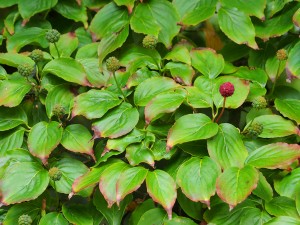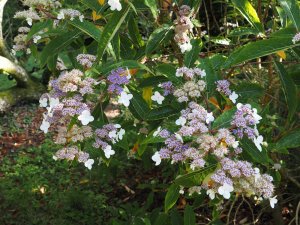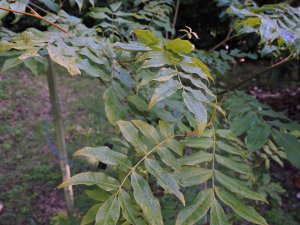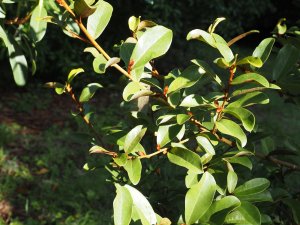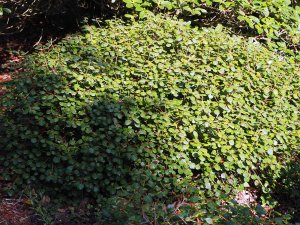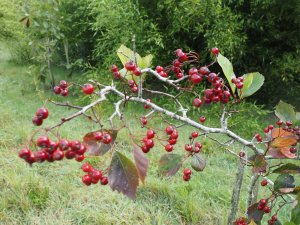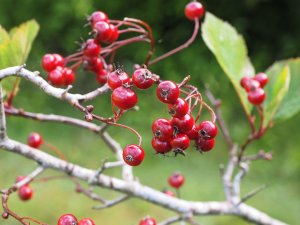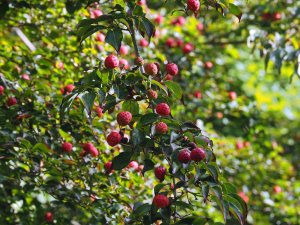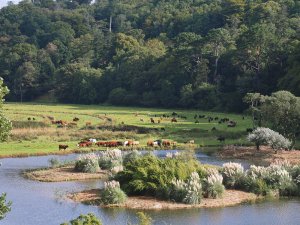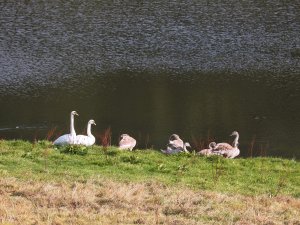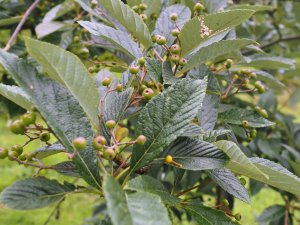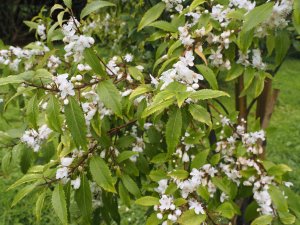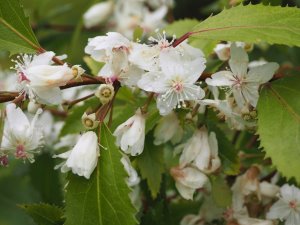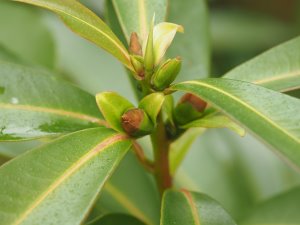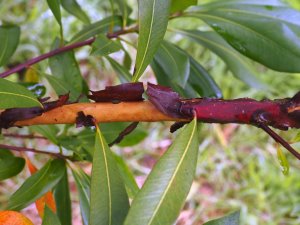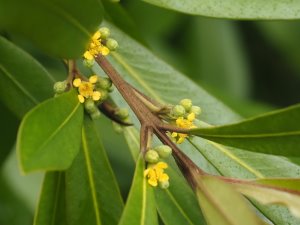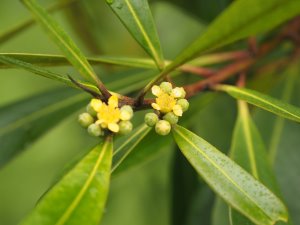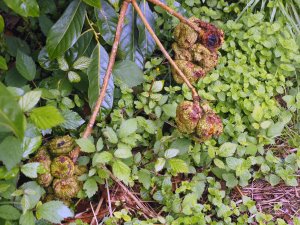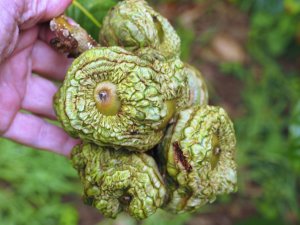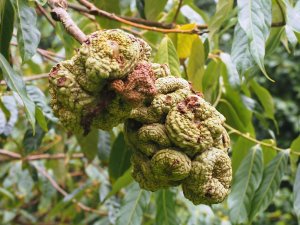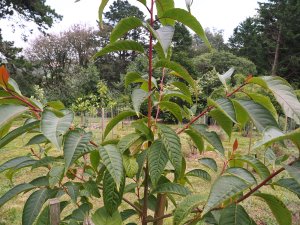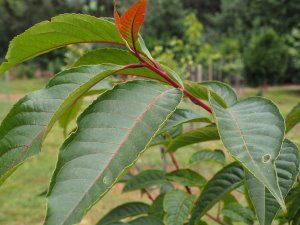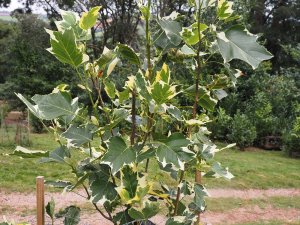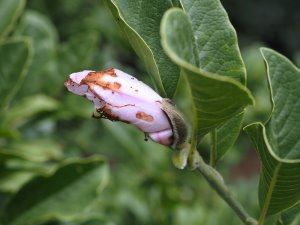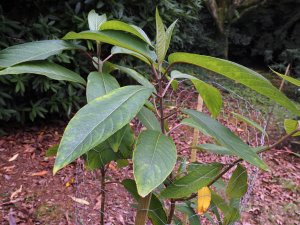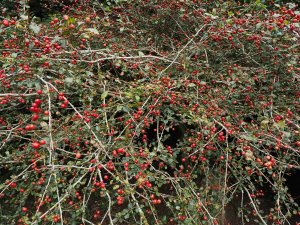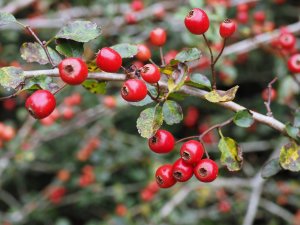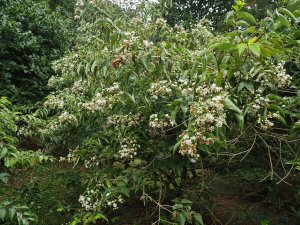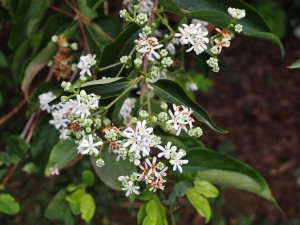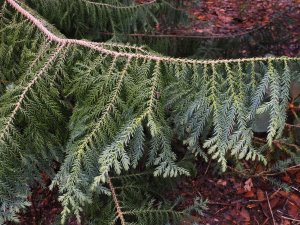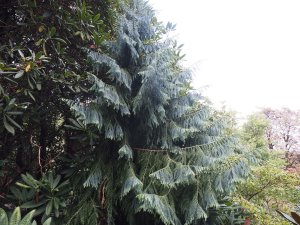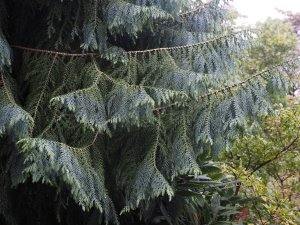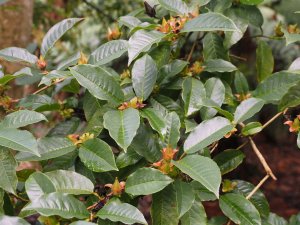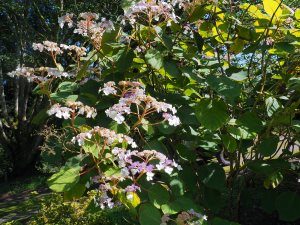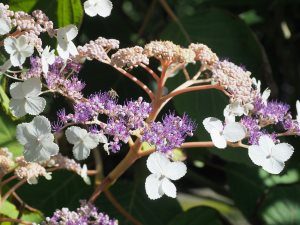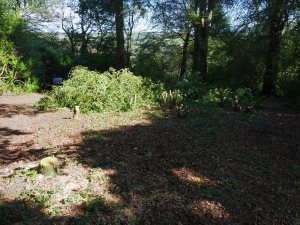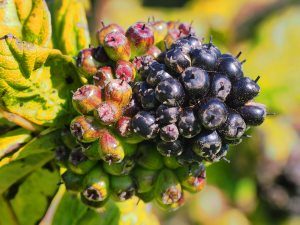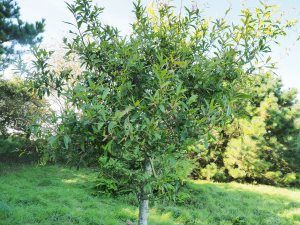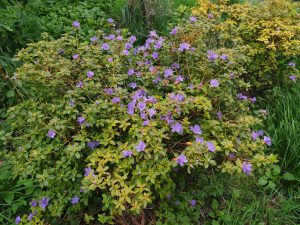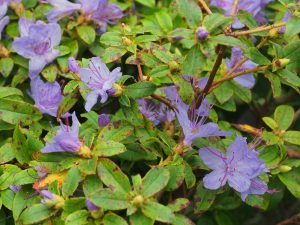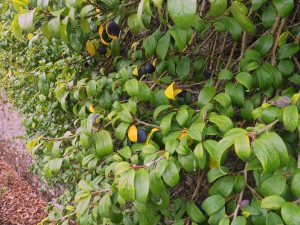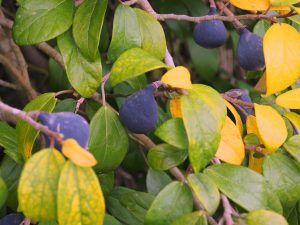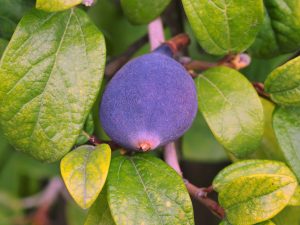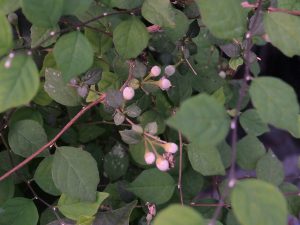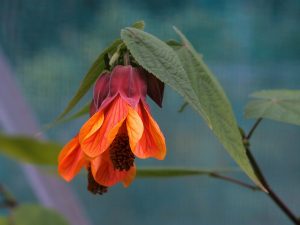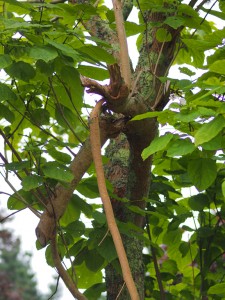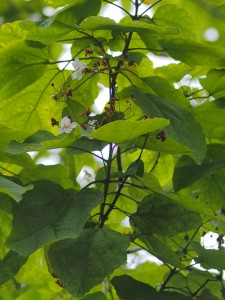2025 – CHW
First small mushrooms this year after the rain.
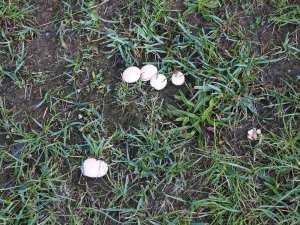
2024 – CHW
Sorbus dunnii has plenty of still unripe seeds.
2023 – CHW
Parastyrax species nova (BWJ15185) – one of two planted out in the last 3 years – is growing away vigorously with large leaves.
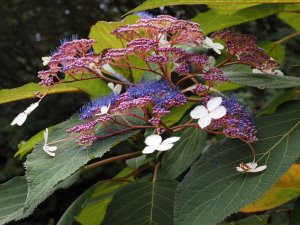
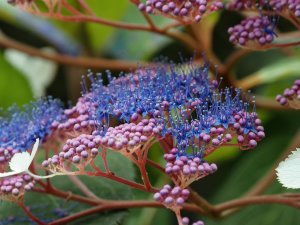
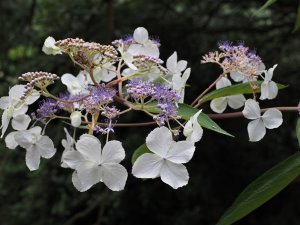
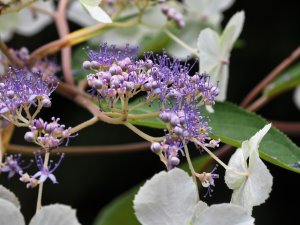
2022 – CHW
Her Majesty Queen Elizabeth dies yesterday.
I was sitting at meetings all afternoon and at Ventonveth in the evening so did not get the news until 8.30pm. Parochial Council meeting scheduled for today was cancelled but not a four hour meeting with Colin French who has recently completed the wild flower survey of all the fields on the farm. These show a massive increase in numbers of plant species and plant diversity since the last survey in 2011. Colin is author of the 600 page pictorial reference book on the wild flowers and ferns of Cornwall. Hopefully we will now have enough proof of the success of our existing low input farming policy and its ability to improve the growing diversity of permanent pastures to enable us to be offered a new Higher Land Countryside Stewardship Agreement for 5 or 10 years from 2024.
2021 – CHW
Some very welcome rain and thunderstorms. The garden looks refreshed and revived.The Cordyline australis has had a severe pruning to remove the dying branches but plenty of good shoots still. It may well now also shoot from the base.
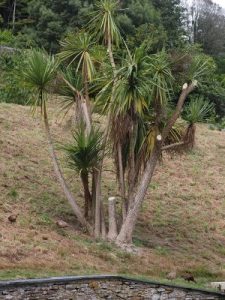
For decades I have been writing about the absurdity of the National Trust, Defra and the garden media describing Spanish bluebells as invasive alien monsters which must be destroyed and removed.Both species grow happily here and cross fertilisation with our native English bluebells is remarkably slow and unthreatening.A newly published article in The Plantsman (RHS publication) makes clear that Spanish bluebells have been grown in the UK for over 400 years. Moreover some of the pink and white hybrid bluebells, which nurseries used to sell before the invasive scaremongering, are long established in cultivation.Both forms grow here and have featured in this diary.Copyright rules prevent me showing you the article in full here but I can repeat the last paragraph of what the Head of Horticultural Taxonomy at Wisley wrote:Hybrid rehab
Can we, now that concerns around the hybrid and its impact on the native species have abated, look to its rehabilitation in gardens? Can we, before it is too late, recognise the value of correctly named cultivars and ensure that they are made available to gardeners? Just as unusual bracteate forms of the native species are being shared among cognoscenti, can we hope to be proud to grow distinctive forms of the hybrid? To my mind the white-flowered form has great merit, and an unusual lilac-flowered form sent into the RHS from Guernsey under the name ‘Bartlett’s Pink’ deserves recognition.
2019 – CHW
Hydrangea aspera var. robusta full out in September as usual long after the other aspera varieties are well over.
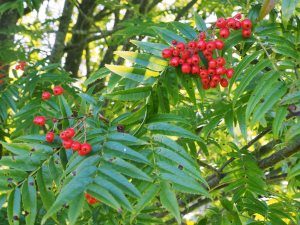
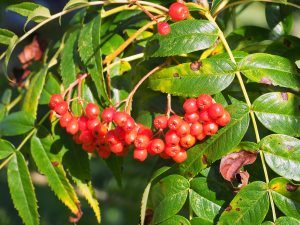
The annual tree survey at Burncoose this Thursday to try to protect visitors from potential dead or falling trees.Rhododendron ‘Blue Tit’ by the pond covered in secondary flowers.
Presenting the cheques after the Caerhays fete which was held on 18th June. We distributed £8,000 to the Caerhays church and local charities.Here £1,500 towards the St Austell Scouts’ new toilet block – Cyril (right) used to be the Caerhays postman.
The Great Gardens of Cornwall members meet at Trewithen to plan the 25 year celebrations of its founding next spring. The new book is all written and soon off to China to be printed (3,000) copies. The first meeting 25 years ago was on Tresco with a youthful Tim Smit, Philip Macmillan-Browse and John Nelson (Heligan), Tony Hibbert (Trebah), Mike Nelhams (Tresco) and James Humphreys (Trewithen) present. Of these only James will be in both photographs for the book as Mike did not turn up today and Tim Smit is now rather too important to come to a small meeting such as this. Nevertheless a little piece of Cornish gardening history. Here are a few pictures of the current Great Gardens members in the walled garden at Trewithen after the meeting. You will have to wait to see the formal picture.
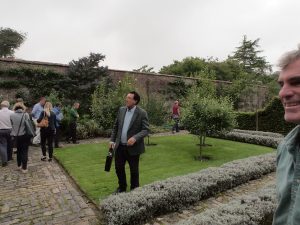
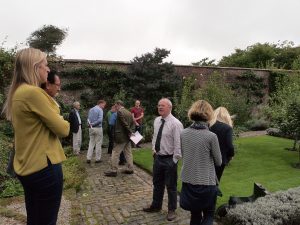
2015 – CHW
Catalpa bignonoides with flowers just going over. This tree was rescued from my grandmother’s garden at Muskoka in St Mawes when it got too large. Surprisingly it moved quite readily but it has become a hopeless tree with branches constantly breaking off as you can see.

The fruits on the cornus are starting to ripen as you can see here in Cornus kousa but are still some way off. The squirrels adore Cornus kousa chinensis fruits most as they have the largest and presumably sweetest ‘strawberries’ of all. However other Cornus kousa varieties do have large fruits too of various colours as we will see shortly.
